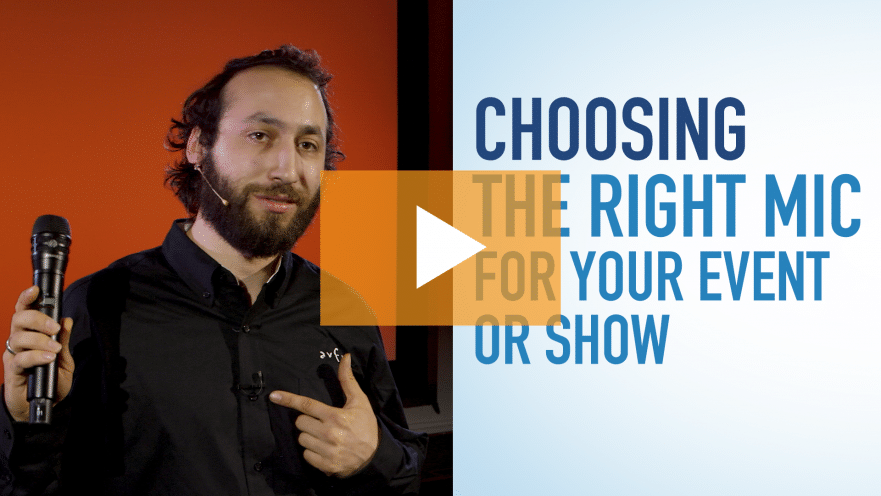Because the microphone is the piece of technology closest to your presenter’s words, it stands to reason that selecting the best microphone for your event type can make all the difference. For meetings and events, there are three basic types of wireless microphones to consider. Nick will walk you through the three options and describe which type of microphone is best for specific types of events and environments.
Below is the Video Transcription
There are three common forms of wireless microphones, handheld microphones, lavalier or lapel microphones, and headset microphones.
Handhelds, they’re great for Q and A out in the audience, quick and easy to pass around. They are great for musicians, artists, trained artists that want to control the proximity.
But let’s say you’re a presenter. You want to roam the stage, and you need a hand on a slide advancer. You need a hands-free option, and that’s where we’ll typically use a lavalier microphone. You can see, obviously by the design, it’s much smaller, sleeker, and in fact, on this black shirt, probably nearly invisible, and some would say, it’s better for camera for that reason.
But lavalier microphones don’t thrive as well in loud environments, such as a trade show floor. That’s where we’ll typically use headset microphones, for a number of reasons. It offers some of the closest proximity to the sound source, you can see, a couple inches from my mouth. That’s gonna give me the best gain before feedback, and because it’s fixed to the head, I can tun my head left, right, up, down. I could do a cartwheel if I wanted to, and I’m still gonna have consistent level in tone, because I have that consistent proximity. We’ll use headset microphones on ballroom events too, typically on a host or a moderator, ’cause they’re a little more active, maybe with head turning, and what not.
But all three microphones really do serve their function in the appropriate context, and audio matters.
If you have questions or suggestions, let us know.
Share
email Newsletter


